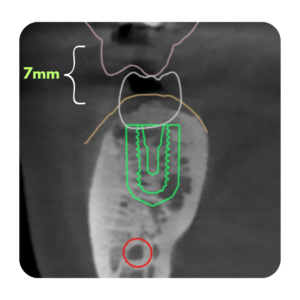So we all know that biofilm is a contributor to peri-implantitis.
The higher the propensity of a material to accumulate bacteria, the more likely you are to have issues with that implant.
So can your choice of material influence how much bacteria builds up?
Titanium has been the standard abutment for some time. Everyone uses it. But recently Zirconium has become a highly popular alternative because it removes that grey shadow and opens up a new world of new esthetic possibilities.
But how does Zirc stack up against Ti in terms of bacterial biofilm accumulation?
A Systematic Review by Yumi et al (2022) seeks to find out what wisdom we can extract from existing literature. After looking through 1,048 search results, they narrowed it down to 19 studies (yup, that’s pretty damn narrow! haha)
They looked at studies from patient’s mouths as well as on the benchtop.
One study by Clever et al in particular was interesting. They did a bacteria accumulation experiment.
[mepr-show if=”loggedout”]Login or signup to Implant Ninja Dojo to read the rest of this article.[/mepr-show]
[mepr-show if=”loggedin”] They used either zirconium or titanium one-piece implants and measured baseline pocket depths.
Then, they told the patients to stop brushing for 2 weeks. (gross!)
After 2 weeks of not brushing, the Titanium one-piece implants had higher bacterial counts and higher pocket depths than the Zirc. But after the patients were instructed to brush again for 4 weeks, the bacterial counts of the Titanium group came back down to match the Zirconium group.
In another study, this time by Van Brakel, found the titanium abutments in their study to be associated with greater pocket depths than the Zirconium abutments.
So, does this actually mean that we will see different clinical outcomes? Is the use of titanium abutments causing peri-implantitis in your patients?
Hmm, maybe not.
In a longer-term study (up to 3 years) by De Olivera Silva, both materials were associated with high survival rates and low bone loss.
In another by De Freitas et al, there were no significant differences in pockets, bleeding on probing, or marginal bone loss.
Some of the 19 studies showed that Zirc accumulates less bacteria. Some show that there is actually no statistically significant difference between the 2 materials.
A minority show that Zirc actually accumulates more bacterial than Ti.
The results are not 100% clear. We are often seeing disagreement.
But at least the disagreements are trending in the same direction.
Bottom Line:
It looks like at least we can say that both zirconium and titanium are safe choices, but that many studies hint at MAYBE zirconium being POSSIBLY a cleaner material (ie reducing bacterial accumulation). But based on the studies out there now, we cannot say it for a fact.
In my book, Zirconium is a great material for delivering improved esthetics and maybe having the “cherry on top” of possibly being a cleaner material to use.
Until there are more Randomized Control Trials done on this subject, that’s what we got to work with!
Cheers!
Ivan
Ps: PTFE was also looked at in one of the studies and they found it to be associated with very low bacterial count, but it also was unable to form a seal with the peri-implant tissues. This ability to form a seal is an important component of maintaining long-term bone stability.
This article is based on the following article from the July/August 2022 of The International Journal of Oral and Maxillofacial Implants.
Clinical and In Situ Oral Biofilm Formation on Dental Implant Abutment Materials: A Systematic Review. Int J Maxillofac Implants 2022;37:639-652.doi:10.11607/jomi.9352 [/mepr-show]





Responses
Yo what do y’all think about this one?
Nice!!